Moose Mountain Provincial Park blends prairie history, lakeside fun, and forest trails into a classic Saskatchewan getaway. From the 1930s Chalet to artist studios and waterfront hikes, this upland pocket of paradise is the perfect detour on your cross-country adventure. Sometimes the best road trips happen off the Trans-Canada Highway.
Disclosure: This post contains affiliate links. If you buy something from one of our affiliates, we receive a small commission at no extra charge to you. Thanks for helping to keep our blog up and running!
Table of Contents
Moose Mountain Provincial Park – A Classic Saskatchewan Getaway
Sometimes the best road trips aren’t the ones you plan. They’re the little detours that appear out of nowhere—like our stop at Moose Mountain Provincial Park.
We were road-tripping east to meet friends for a canoe trip in Ontario, hugging the Trans-Canada Highway to keep on schedule. Then came the text: “We’re staying the night at Moose Mountain.”
We’d just finished a day exploring the tunnels and murals of Moose Jaw, so a park named Moose Mountain sounded like a perfect next step. Prairie murals one day, prairie moose the next? We couldn’t resist.
The First Resort
Long before it became a provincial park, this upland oasis of forests and lakes was a magnet for settlers. In the late 1800s, homesteaders came here to graze cattle, cut timber, hunt, fish, and collect water. But the shallow, sun-warmed lakes had another draw: recreation.
By the mid-1880s, locals were swimming, sailing, and picnicking at what was then called Fish Lake. In 1885, Fred Christopher saw an opportunity. He built two log cabins on the northeast shore, bought a few tents and rowboats, and opened Saints Rest Resort.
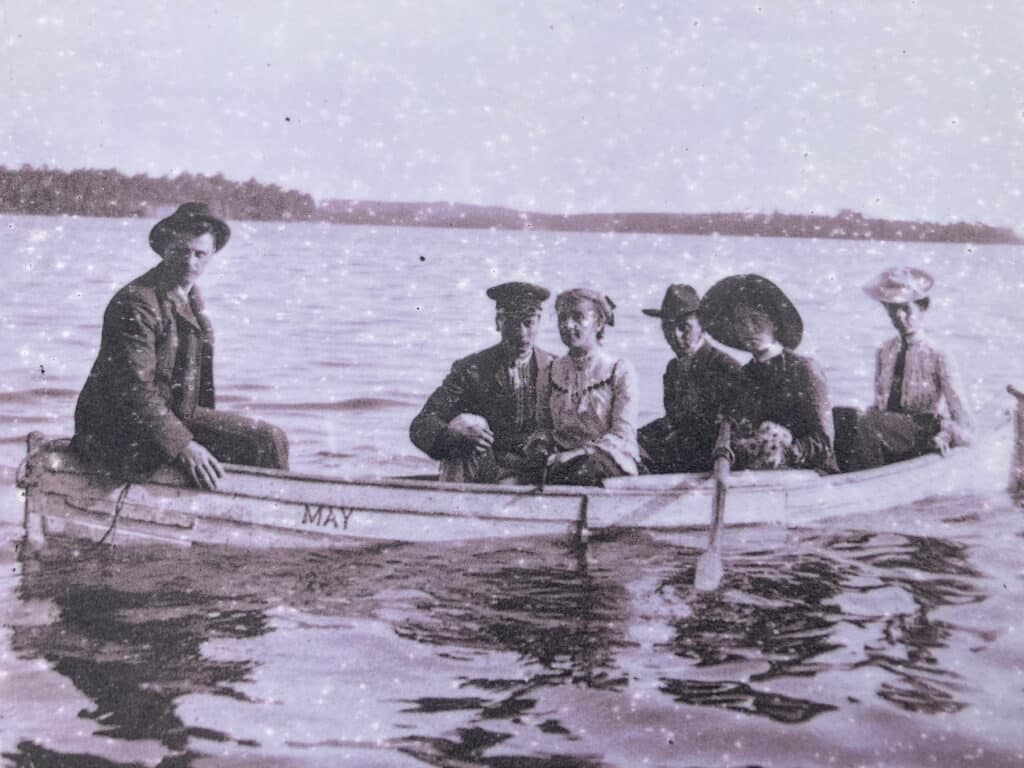
Business grew quickly. Christopher later expanded with a permanent building purchased from a local resident, Percy Fripp, and transformed it into the Christopher Hotel in 1899. Guests could rent boats, buy supplies, stable their horses, or sit down for a hot meal. In winter, loggers and trappers filled the rooms. The prairie had found its first resort.
What’s in a Name?
Fish Lake’s name didn’t stick around forever. In 1932, the lake was officially renamed Kenosee, derived from the Cree word kinosew, meaning “fish.” Same meaning, but a stronger connection to the land’s Indigenous roots.
Developing Moose Mountain Provincial Park
By the early 1880s, the federal government had already protected the Kenosee Lake area as a Dominion Forest Reserve. In 1931, it officially became Moose Mountain Provincial Park—one of Saskatchewan’s first.
The timing was no accident. During the Depression years, work camps and relief projects were set up in the park, building much of the infrastructure still used today. One of their biggest achievements was the Chalet, a grand hotel and restaurant overlooking the lake.

With terraced gardens, stone cabins nearby, and a rotunda on the main floor, the Chalet became the park’s showpiece. It officially opened July 2, 1932—only to suffer a devastating fire just over a year later. Luckily, no one was hurt, and the Chalet was reconstructed the following year.
Visiting Moose Mountain Today
Pulling into the park today, you can see how that mix of history and recreation still defines the place. We set up camp and wandered along mowed trails that double as ski and snowshoe routes in winter. The paths twist through forest and wetland, linking small lakes where the breeze carries the sound of loons. (Sadly, no actual moose crossed our path, but we kept our eyes peeled!)
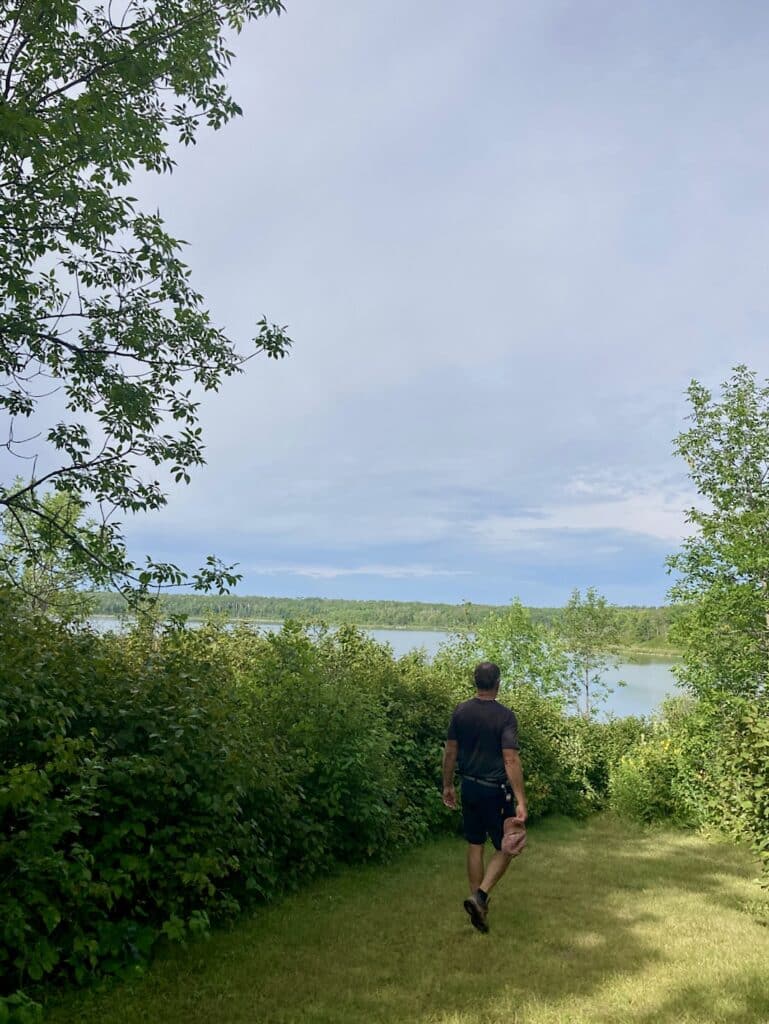
Down by the lakeshore, it’s easy to see why Kenosee has been a draw for more than a century. Water sports still reign—paddleboards and kayaks skim the surface while motorboats tow laughing tubers behind them.
We followed the shoreline trail to the Chalet, which now houses the Visitor Centre and park offices. The building’s stone walls echo its 1930s past, and inside you’ll find displays on both the natural and cultural history of the region. We lingered over the historic photos—sepia-toned snapshots of families in bathing suits, fishermen showing off their catch, and the Chalet in its earliest days.
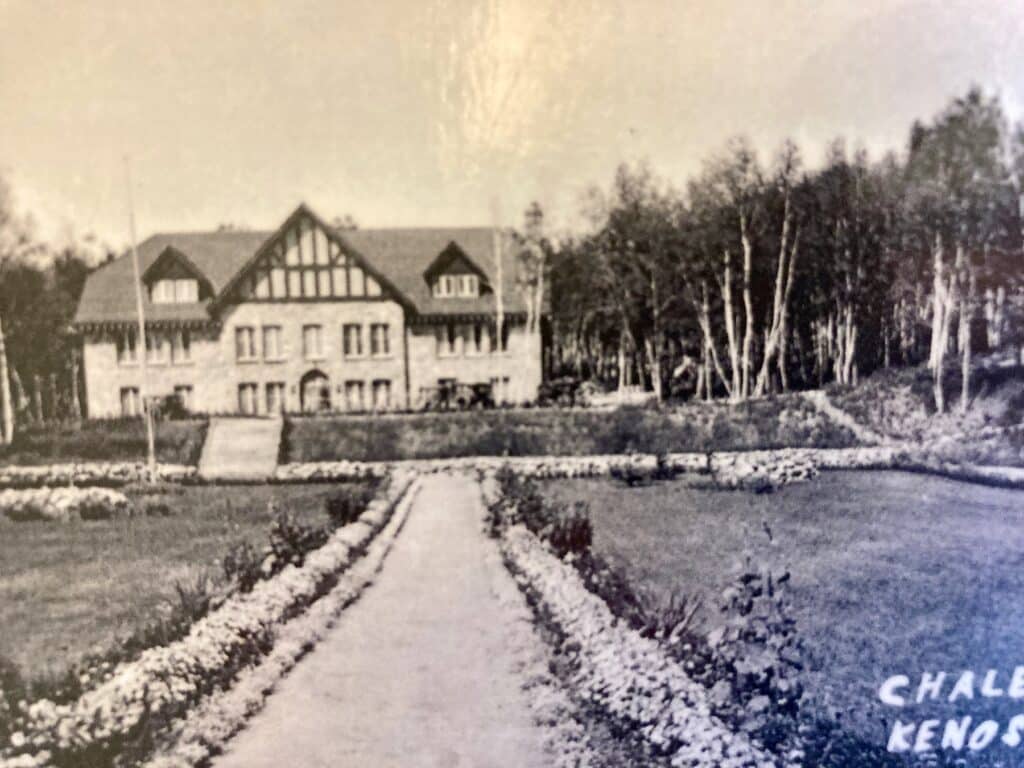

Art in the Park
Just beyond the Chalet, a row of rustic stone cabins has been repurposed into artist studios. These heritage buildings once welcomed overnight guests but now serve as creative spaces.
We spent time with artist-in-residence Ken Frederickson, who welcomed us inside. A rancher and livestock photographer for decades, Ken began bronze casting in 2015. His work—rooted in the prairie landscape and the animals that inhabit it—feels right at home in Moose Mountain. Chatting with him added another layer to the park’s identity: not just history and recreation, but creativity too.
When You Go
- Getting there: Moose Mountain Provincial Park is less than a 3-hour drive southeast of Moose Jaw. It’s an easy side trip from the Trans-Canada Highway and a great way to break up a long prairie drive.
- Camping: The park has multiple campgrounds with online reservations available. Book ahead in peak summer months.
- Things to do: Swim or paddle on Kenosee Lake, hike or bike the network of trails, or visit in winter for skiing and snowshoeing. Don’t miss the Visitor Centre and artist studios.
- History buffs: Keep an eye out for interpretive displays about the Chalet, early resorts, and the park’s Depression-era projects.
Moose Mountain may not have been on our original itinerary, but that’s the beauty of travel detours. From prairie lakeshores to historic resorts, it’s a classic Saskatchewan adventure—proof that sometimes the best stories happen when you leave the highway.
Looking for more Saskatchewan adventures? Check out these posts:
Travel Adventures: Exploring Fort Walsh National Historic Site
Canoeing the South Saskatchewan River
Actively Exploring Prince Albert National Park’s Past
PIN THIS POST FOR FUTURE REFERENCE!


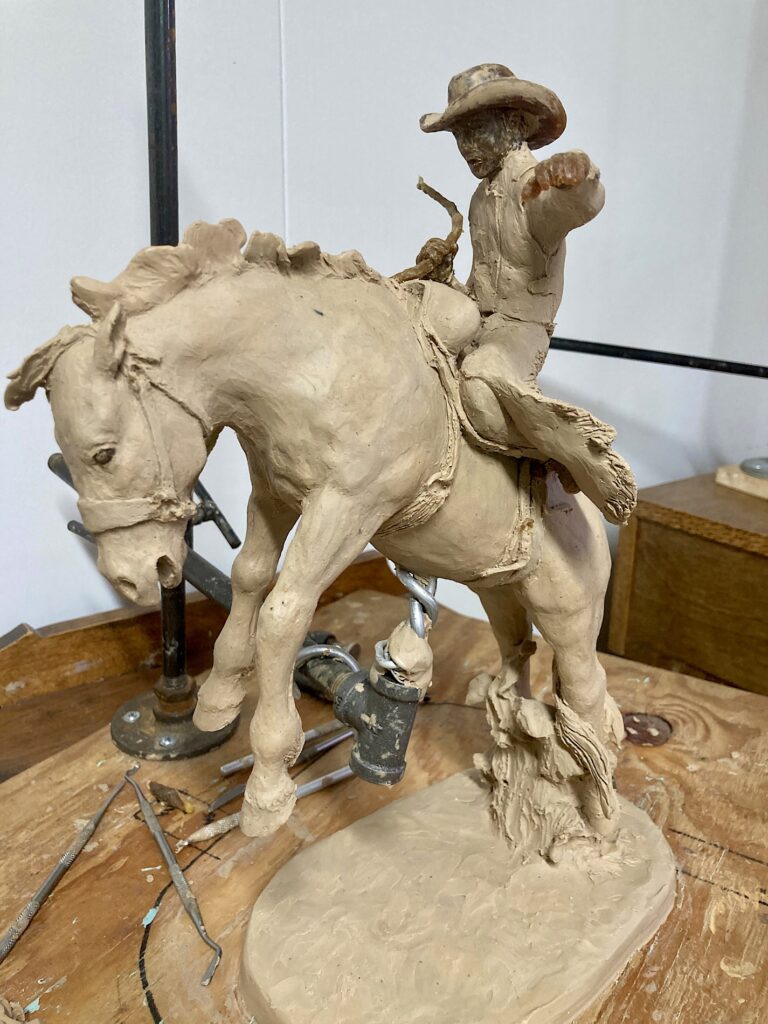
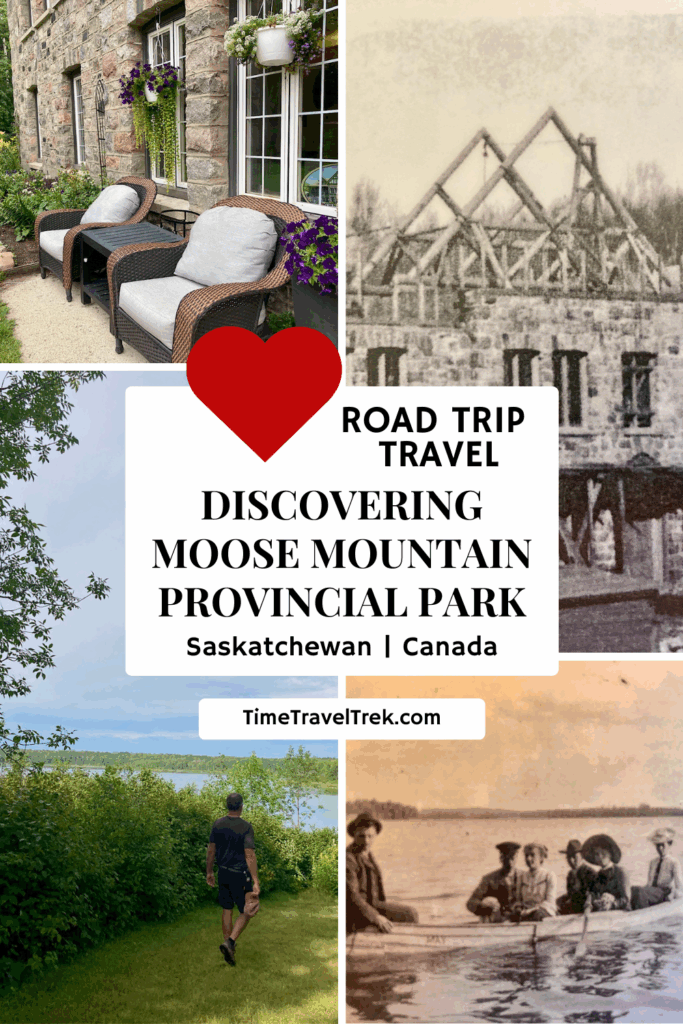
Leave a Reply